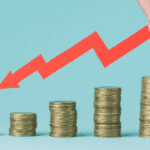
IoT and AI have quickly revolutionized industries worldwide. Their use has amplified data faster than ever, from wearable devices like smartwatches or AR/VR eyeglasses to smart grids for energy management or sensors for maintenance prediction. Every sector leverages the IoT and AI’s potential, yet agriculture is no exception!
Agriculture has seen dramatic advances over the past several decades thanks to Agriculture Software Development and new technologies. These have improved efficiency, productivity, and sustainability. Artificial Intelligence and IoT technologies are two key trends shaping agriculture’s future, and both have enormous potential to improve lives.
This article investigates how AI and IoT could benefit smart agriculture and farming by exploring their revolutionary potential in this sector.
AI and IoT in Agriculture For Smart Farming
Smart farming is a capital-intensive and high-tech technology that allows farmers to grow healthy and sustainable food. Drones for agriculture, monitoring of livestock strategies, and smart greenhouses are just a few examples of the IoT tools used to assist in intelligent agriculture. Farmers need to adopt the latest technology to fulfill food production demands and increase the quality of their crops. Smart agriculture uses AI and IoT technology to assist farmers in boosting their crop yield.
- It also ensures healthy crops by tracking temperature, soil humidity, and other specific crop growth conditions. Continuous real-time updates through continuous monitoring reduce the amount of crop wasted.
- The farmers can use the data they collect to reduce their workload and make it easier to automate a range of agricultural-related chores.
- The data collected may be used to research patterns. Data-driven forecasts can improve agricultural business results and boost the performance of the food supply chain.
- IoT smart apps also help reduce costs caused by the overuse of resources such as water and electric power. They can ensure prompt watering and pest control anywhere using wireless devices and automated systems.
Benefits Of Implementing AI and IoT In Agriculture
AI and IoT technologies will assist farmers in simplifying their traditional farming practices and improving farm decision-making. If you are an Agriculture Software Development Company trying to give its processes an overhaul, these two technologies could aid:
Automated Agricultural Equipment For Increasing The Yield Of Crop
Automated farming is a way for farmers to monitor their farms. Sensors, robotics, and drones monitor changing conditions. They aid in allocating the resources needed to increase yield, identify crops ready for harvest, and eliminate weeds. By increasing crop yields, automated farming machines improve the sustainability of farming.
In particular, autonomous tractors can be programmed in advance to allow farmers complete autonomy or managed remotely. This is beneficial for row crop farmers. It makes them less manual and increases efficiency throughout the entire operation.
Data-Driven Agricultural Decisions Made With Precision Through Analytics
Using big data and AI assists farmers in analyzing vast volumes of information. Edge computing and cloud services are great tools for analyzing and comparing data. This will help them choose the kind of crop to plant and the time of sowing. Additionally, they can determine the yield needed for specific production patterns. There are many uses of large data that aid in monitoring weather data and help to make critical decision-making promptly. Machine Learning helps detect pests and manage diseases.
Pesticides Are Used Less Often For Better Soil Health
AI technology for product development, powered by ML, may aid farmers in analyzing information on genetically modified seeds to determine the optimal time to plant and the quantity of seeds that need to grow. Traditional agriculture involves applying fertilizers and pesticides, which rely upon manual calculations. Excessive watering and pesticide application deplete the crops’ nutritional value.
With the help of drones that fly in the air, farmers can continuously monitor crop conditions and manage pesticides for healthy and organic fruits and vegetables. Wireless farm sensors aid in studying soil health to improve crop traits for high-quality goods. We never thought that a variety of ways could improve agriculture.
Reduced Risk Of The Business
Analyzing and collecting data will assist farmers in managing business risk. It is possible to estimate the demand for their products and predict sales. The connected methods can also help reduce the time required to complete business tasks rather than manual processes. Farmers can remotely control the amount of crop to be stored or for sale. They can calculate the total cost to determine a profit selling price for every plant.
Reduced Labor Costs Because Of Advanced Technology
It can be expensive and difficult to find qualified workers in agriculture. Automating repetitive procedures allows you to manage both time and expenses. The IoT-enabled devices enable farmers to conduct periodic checks on their plants and monitor their well-being. Autonomous robotic machines perform large-scale harvesting, increasing productivity and decreasing labor costs, reducing farmers’ financial burden.
The manual harvesting process is lengthy and can lead to waste. Artificial intelligence and machine vision-based robots recognize mature crops and fruits and harvest them safely, regardless of whether the number of people in the field isn’t high.
Deployment Of Predictive Systems For Flexible Farming Workflows
Monitoring in real-time using IoT technology increases the efficiency of agriculture processes. Forecasting systems help farmers anticipate changes in growth conditions. Crop quality is judged based on weather conditions, humidity, and air quality. Proactive measures to safeguard the plants from pests and adverse conditions will ensure less waste.
Key Applications Of AI And IoT In Agriculture
You’ll agree that IoT, AI, and Agriculture App Development can be the solution to improving operational efficiency, reducing waste production, and supplying food needs. This section discusses the IoT and AI applications used in agriculture.
Smart Irrigation
IoT sensors will gather live data about soil moisture levels and weather conditions. AI algorithms will utilize this data to optimize irrigation plans and water use. This is a great way to save water resources and ensure the crops get the correct amount of water at the appropriate time.
Precision Agriculture
AI algorithmic systems can analyze the information gathered through IoT sensors and give farmers specific recommendations on planting, fertilizing, and other irrigating chores. This is a way to implement variable rate (VRA) methods that optimize the use of resources and minimize waste. The result is greater efficiency and eco-friendly farming practices.
Smart Spraying Hoses
AI-driven drones help track the index of vegetation in the crop and its overall health. The sensors monitor insects and diseases. The devices only spray pesticides for plants with an infection. This reduces the usage of chemical pesticides that are not harmful to plants and stops the infection to prevent it from spreading.
Supply Chain Optimization
With the help of AI and IoT technology, farmers will improve their understanding of supply chain processes, thereby optimizing the logistics process, decreasing waste, and improving overall efficiency.
Crop Health Monitoring
IoT devices, like drones or sensors based on the ground, can capture high-resolution photos and data about crop health. AI algorithms then analyze these data and identify the earliest indicators of stress, pests, or disease, which allows farmers to safeguard their crops and increase their yields by taking proactive steps.
Livestock Management
AI-powered IoT devices can track animals’ health and behavior and their exact location, allowing farmers to improve their livestock welfare and efficiency. In particular, AI algorithms can analyze data from animal movements or body temperature and food patterns to spot warning signs of illness and stress and allow for prompt intervention.
Agriculture Drones
Aerial and ground-based drones have proven effective in assessing crop conditions, observing infestations, and analyzing soil. These drones are also employed for spraying crops and sowing seeds, coordinating irrigation, and collecting live field data. The data collected can be utilized to determine yield, measure nutrients, and map external influences.
Real-Time Weather Trackers
IoT-based smart sensors provide live weather conditions, climate, and information. Farmers can use the comprehensive forecast to evaluate crop requirements. Certain systems can also offer alarms that help farmers save their crops during severe weather conditions.
Pest Detection Tools
AI systems work in conjunction with low-cost satellites to obtain photographs of the farm. The images are then compared with previous information to identify rodents, pests, insects, and disease algorithms that match existing data to alert farmers. Sometimes, smart spraying will be initiated automatically to prevent the spreading of insects. Pest control and other precautionary techniques are suggested to aid farmers.
Robots For Agriculture
Robots for agriculture help reduce manual effort and make life easier by performing many farm tasks. They assist in monitoring and harvesting crops more effectively than humans. AI teaches robots to identify and manage weeds, ensuring high-quality crops. The robots can sort the crop based on the quality of its produce and then pack it in a shorter time than conventional techniques.
Yield And Price Forecasting Instruments
Farmer App Development Company is developing techniques like AI, ML, and Big Data to assist farmers with predicting the yield of their harvests. Data from the past is analyzed for price variations, and a forecast of the prices in harvest is calculated. Maps of farms aid in calculating an accurate yield rate for a hectare. Farmers analyze various parameters like rain, pesticides applied, pH levels, temperature, and environmental conditions to come up with an estimate.
Conclusion
The synergistic connection between AI and IoT technology revolutionizes the agricultural and smart farming industries, improving efficiency, productivity, and sustainability. Utilizing the combination of capabilities of AI and IoT, farmers can make informed decisions, improve their operations, and create sustainability in the agriculture sector. As these technologies develop and become more advanced and mature, we are likely to see new and innovative solutions developed, further revolutionizing the landscape of agriculture.








